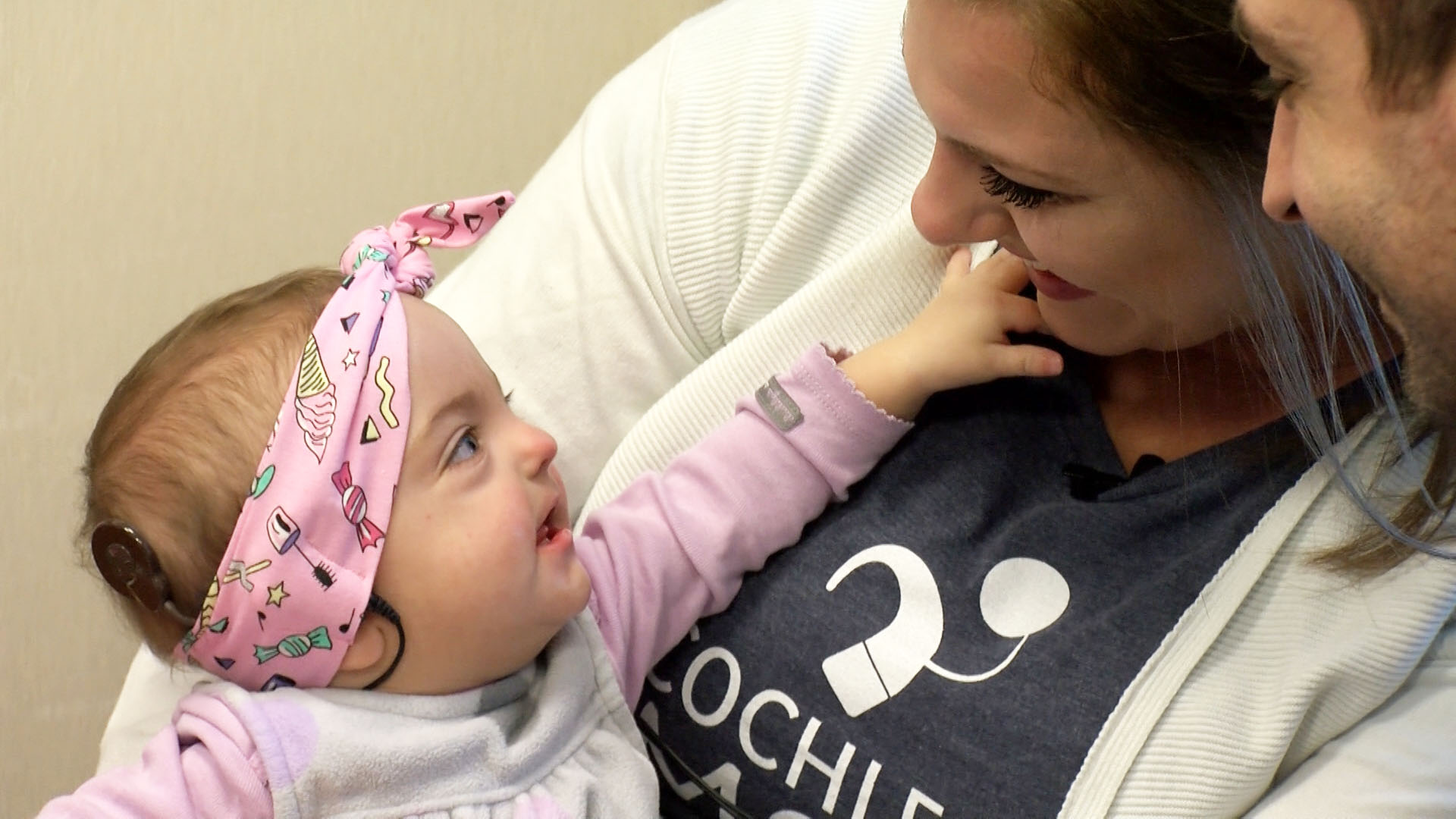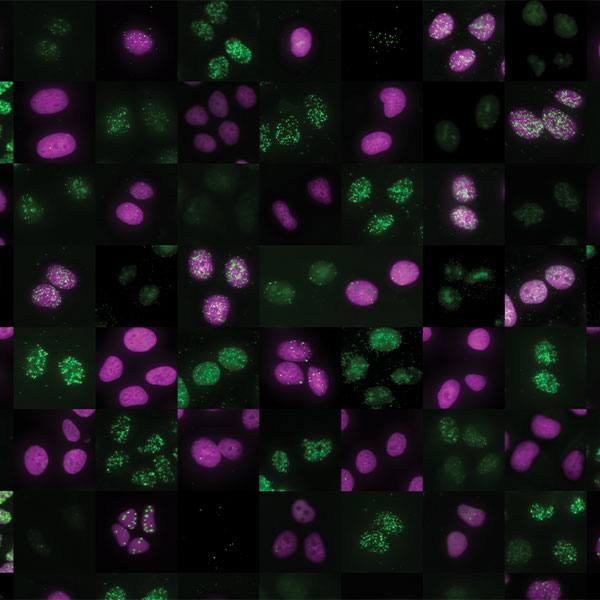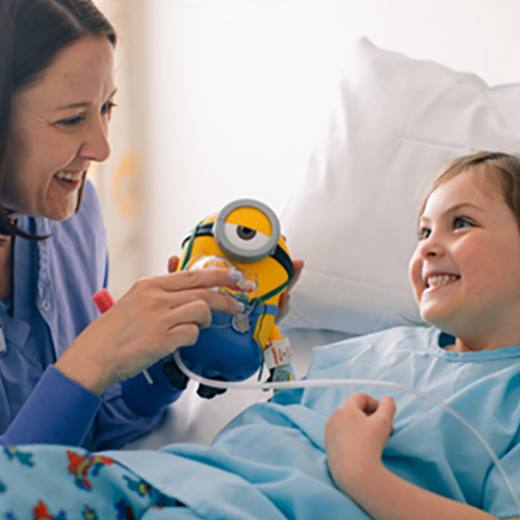
For many parents, the first months of having a new baby are full of cuddles, kisses, some sleepless nights and joy. That's exactly what life was like for the Little family after baby Aida was born. But when she was one month old, her parents realized their happy, beautiful daughter was deaf. Experts at Mayo Clinic diagnosed Aida with a rare condition and helped to restore her hearing.
Watch: The road to hearing for baby Aida.
Journalists: Broadcast-quality video pkg (3:21) is in the downloads at the end of the post. Please ‘Courtesy: Mayo Clinic News Network.’ Read the script.
The happy sounds of childhood ... a brother's giggle. A mother's loving coo.
"She loves her daddy," says Melinda Little.
Or the joy of your own calls of contentment. Baby Aida can't hear any of it. She was born deaf.
"When you first hear it, you kind of say, 'That's not true,' or, 'What can we do to help it? You know, what can we do to make her hear?' I don't think I was ready for that kind of information," says Melinda.
Aida's mom and dad, Melinda and Matt Little, took her to Mayo Clinic, where a team of experts diagnosed Aida with a rare genetic condition.
"Aida has a condition called Waardenburg syndrome," says Dr. Lisa Schimmenti, a Mayo Clinic genetic diseases specialist. She says Waardenburg syndrome is a collection of symptoms caused by a change in a gene. "If you went and Googled this disorder, you'll see pictures of people who may have a white streak of hair, or they may have one blue eye and one brown eye."
Some of the tools Dr. Schimmenti uses to learn about deafness similar to Aida's are tanks full of zebra fish.
"We share 70 percent of our genome with zebrafish, and the same genes that cause conditions in us, cause the same condition in fish," says Dr. Schimmenti.
But, unlike these fish, Aida may benefit from technology to help her hear.
"Cochlear implant surgery and cochlear implant technology has evolved very significantly over the last several decades," explains Dr. Matthew Carlson, a Mayo Clinic head and neck surgeon, who is also on Aida's care team. "There's a lot of different changes that happen in the inner ear that result in this hearing loss, but the end result is loss of inner ear hair cells for almost all these different conditions."
Here are the basics on how hearing works. The outer ear collects sound, which travels down the ear canal to the ear drum. The sound waves cause the ear drum and middle ear bones to vibrate. The sound waves then move into the inner ear, or cochlea, where tiny hair cells turn them into electrical signals that are transmitted to the brain. A cochlear implant bypasses the missing hair cells.
Baby Aida, like all patients who get cochlear implants, went through two steps. First was surgery. Through a small incision, Dr. Carlson and his team slip a small group of electrodes or wires that are all kind of bundled together, and they follow the natural curvature of the cochlea. And the electrodes are connected to a device that's underneath the skin in the scalp. The device sends a tiny current via the electrodes to the cochlea and then to the brain.
"Right now, she has the initial implants, the magnets and the wiring that goes into her cochlea nerve," says Matt Little. "So to activate it, they'll just have the outer piece attached, and then it's just like, basically, from what I understand, like a Bluetooth headset, pretty much."
Cochlear implants work for most people who have them, but there's always the chance they won't. Aida’s brother, parents, grandparents and cousins were all there the day audiologists at Mayo Clinic attached the outside piece behind Aida's ear and turned it on for the first time. To people in that room, witnessing Aida hear for the first time was to witness a miracle.
"For me, it's what brings me to work every day," says Dr. Melissa DeJong, a Mayo Clinic audiologist.
"Just to be able to hear — hear the sounds around her — that's what I’m looking forward to," says Matt Little.
Everyone is looking forward to Aida being able to hear the happy sounds of childhood.







